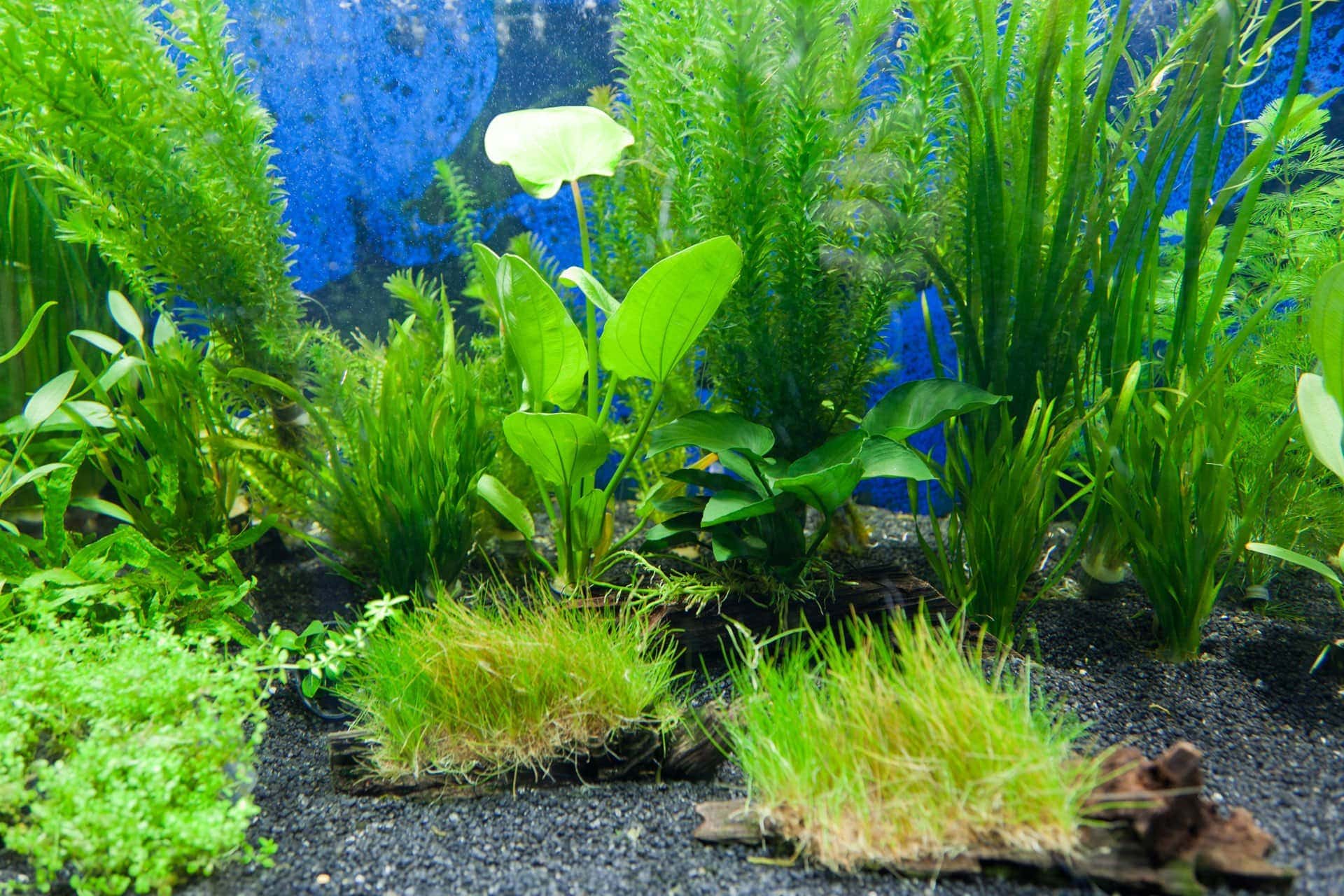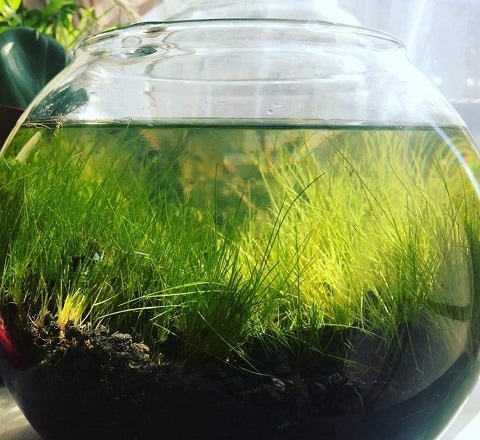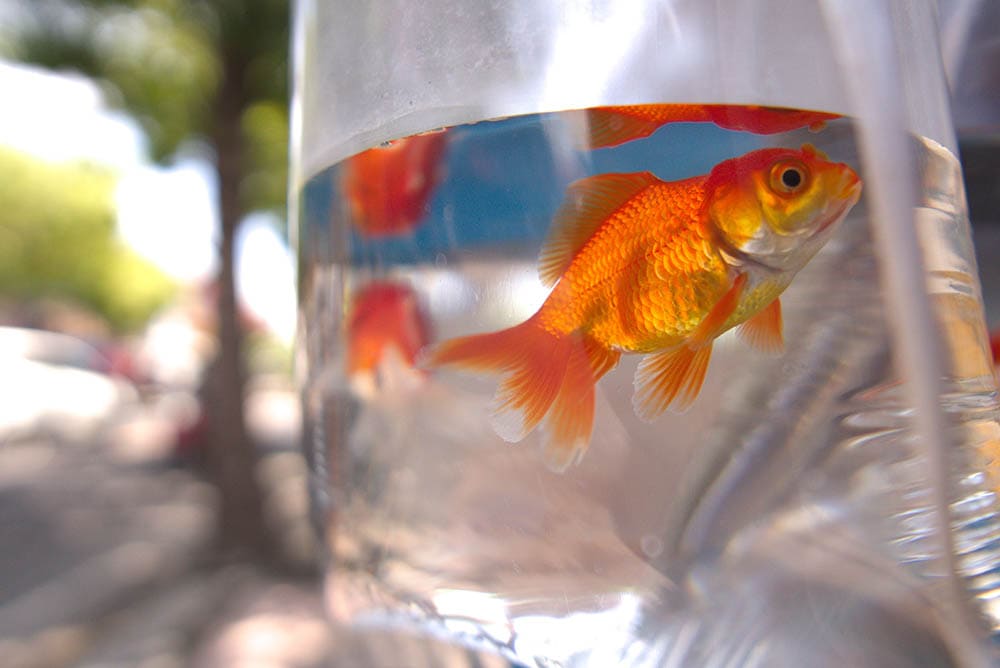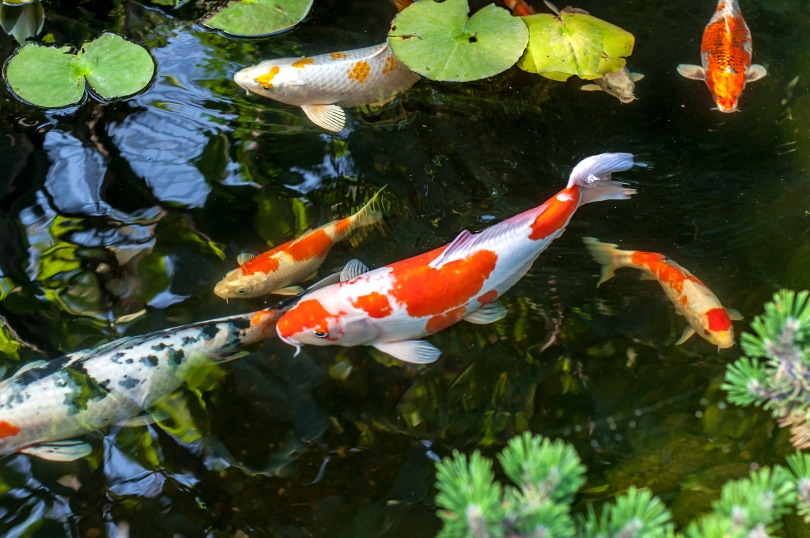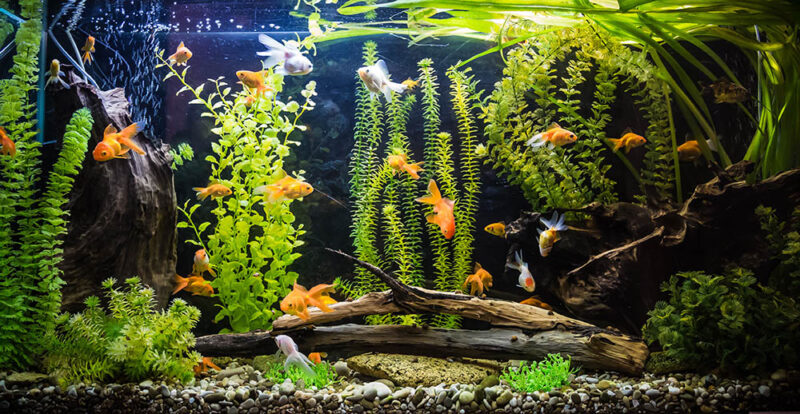Between fish food that wasn’t eaten, decaying plant material, and the excrement of your aquatic pets, an aquarium can start to build up some very high levels of nitrates. The solution? More plants!
Some aquarium plants are excellent at absorbing nitrates from the water and even replace them with oxygen. This is great for all the creatures in your tank and will help to keep the water fresh and healthy. But which aquarium plants should you choose?
While there are some aquarium plants that are difficult to grow and care for, others are extremely simple and nearly foolproof. The following five reviews will compare some of our favorites to help you get an idea of what to expect with each one.
A Quick Comparison of Our Favorites in 2024
| Image | Product | Details | ||
|---|---|---|---|---|
| Best Overall |

|
Live Hornwort Plant |
|
Check Price |
| Best Value |

|
Aquatic Arts Marimo Moss Ball |
|
Check Price |
| Premium Choice |

|
Greenpro Anubias |
|
Check Price |

|
Mainam Dwarf Hairgrass |
|
Check Price | |

|
SunGrow Aquarium Grass Seeds |
|
Check Price |
The 5 Best Aquarium Plants to Reduce Nitrates
1. Live Hornwort Plant – Best Overall
If you’ve never grown aquatic plants before, you may feel that it’s a daunting proposition. But the Hornwort plant is one of the easiest freshwater plants you could attempt to grow. Naturally, this makes it an excellent choice as the first live plant for your aquarium.
This plant is so easy to grow that it has spread to every single continent on the planet, with the exception of Antarctica. That’s pretty impressive for a plant that originated in North America! Plus, it bodes well for your chances of successfully growing this plant. Since it’s tolerant of most water conditions, it’s very forgiving and less likely to die off from a simple mistake.
One great thing about the Hornwort plant is that it doesn’t root, so it won’t mess up your substrate. It’s also very fast-growing, so you’ll know right away whether or not you’re seeing success.
This particular grouping of Hornwort includes five separate stems, allowing you several chances at growth, or growth in several areas of your aquarium.
But watch out for snails! They may arrive on your plants, but they can be deadly if introduced into your fish’s habitat.
2. Aquatic Arts Marimo Moss Ball – Best Value
Marimo moss balls are a hardy aquatic plant that resembles balls of moss, hence the name. But, they’re not a moss at all. They’re actually little balls of algae! And they’re super-effective at absorbing nitrates. So much so in fact, that they out-absorb other algae in the environment, preventing their growth and stopping unwanted algae.
This plant is one of the easiest aquarium plants to grow. It’s pretty difficult to mess up! They don’t need much light, require almost no maintenance whatsoever, and they can even help oxygenate your tank, reducing the need for noisy air stones.
The Aquatic Arts Marimo Moss Balls undergo a three-step quality control process. This is to eradicate any pests or parasites that may contaminate your aquarium. Because of this, we expected them to arrive clean. But they were surprisingly dirty! We had to thoroughly clean them before placing them into the tank.
More than just a nitrate-absorbing oxygen-producing plant, Marimo moss balls are also a great way to liven up your aquarium! Their bright green hue is a great way to introduce some festive color. Between appearance, performance, and pricing, we think these are the best aquarium plants to reduce nitrates for the money.
3. Greenpro Anubias – Premium Choice
The Anubias plant grows well in shady places, such as under rocks and larger plants. Because of this, it does very well in aquariums that aren’t too brightly lit. It’s a hardy plant that’s comfortable in a wide range of water conditions.
Fluctuations that might kill other aquatic plants, such as changes in temperature, pH, and general hardness, won’t be so detrimental to the Anubias. This makes it incredibly easy to grow, even for those who don’t have a green thumb.
This plant can be grown totally or partially submersed, depending on how your aquarium is set up. It grows very fast and can get pretty big. It’s extremely easy to care for and even provides excellent shade for bottom feeders.
The Greenpro Anubias is attached to a lava rock that can help keep it securely at the bottom of the tank. It’s a pretty small specimen and must be treated for parasites or you might be putting your fish at risk. But thanks to its ease of growing and exceptional nitrate absorption, the Greenpro Anubias is a premium option that we feel confident recommending.
4. Mainam Dwarf Hairgrass
There are many ways you can use Mainam Dwarf Hairgrass in your aquarium. It can be planted in dense clumps packed closely together to create a thick grassy effect. Or you can plant it in smaller groupings as decorations and accents.
This interesting plant has something of a memory, meaning that if you cut it short before planting, it will remain short. Alternatively, you can allow it to grow very long and it will develop a more of a seaweed appearance, flowing back and forth with the current of the water.
Hairgrass is very easy to grow, though it can be a bit more difficult to plant. Even for beginners, its adaptable nature makes it easy to grow. Plus, it’s excellent at removing pollutants from the water, replacing the lost chemicals with oxygen.
The Mainam Dwarf Hairgrass is free of pests and diseases, though we did get a snail in one batch. It’s guaranteed to arrive alive and stay alive for at least three days, so you better plant it quickly! It requires very little upkeep, but it does need more light than other aquatic plants we’ve grown, so make sure your tank is well-lit enough.
5. SunGrow Aquarium Grass Seeds
If you think you’ve got a bit of a green thumb and want to try something different, then you might attempt planting these Aquarium Grass Seeds from SunGrow. You get a lot of seeds for a reasonable price, probably more than your aquarium will need—especially considering that this plant will cover the entire aquarium floor, essentially creating a carpet of aquatic grass.
This grass is meant to remain very short, under 0.5 inches. In our experience, it kept growing far past this point. In fact, we had to continually trim the grass to stop it from taking over the whole aquarium! This resulted in more upkeep than any of the other plants we tested for this list.
One nice thing about the aquarium grass is that it provides a natural food source for many aquatic creatures. But to get the best benefits for this, you’d have to grow it on the surface so the roots are exposed to your fish.
One day, we noticed grass floating on the surface of the water. After removing it, more continued to appear. Soon, we realized that they were separating from the substrate, resulting in a continuous mess that needed daily cleaning.
Buyer’s Guide: How to Choose the Best Aquarium Plants to Reduce Nitrates
Okay, it’s time to pick your plant and start producing! Wait, you’re still unsure of which one is the best choice for you? Don’t worry, we’ve been there before, which is why we’ve written this short buyer’s guide. Our hope is that it will help you streamline the choices and make the right decision so you can stop reading and start planting!
How to Choose Which Aquarium Plants to Grow
With so many options available, picking just one can seem quite difficult. How should you decide? Should you just pick the prettiest one?
Well, that’s certainly one way of doing it. But we think you’d be better off identifying the key traits to hone in on and then picking a plant that fits those choices. Luckily, we’ve already identified those traits, so keep reading to learn what they are.
Related Read: Complete Care Guide for Planting & Growing Green Foxtail in Your Aquarium
Ease of Growth
Do you think of yourself as a regular Dr. Greenthumb? If so, then ease of growth may not be an important factor for you. Indeed, you may prefer the challenge of a plant that’s hard to grow!
For the rest of us, it’s important to match the plant with your experience level. If you’ve never grown an aquatic plant before, this might mean finding the plant species that is the easiest to grow and hardest to mess up.
How Much Maintenance Is Required?
This goes right along with how easy a plant is to grow. If that plant needs a lot of maintenance, it may not be a great choice for a novice aquarium gardener. Some plants are easy to grow initially but need to be trimmed regularly if you don’t want them to take over the whole tank. This is definitely something to keep in mind since trimming and upkeep can be quite time-consuming.
Appearances and Aesthetics
Once you’ve picked out the plants that fit your green-thumb experience level, you can narrow the choices down further by appearances. Do you prefer the look of one plant over another? Easy choice. You’re going to be looking at these plants every day for the foreseeable future, so it would be a good idea to pick plants that you find attractive and interesting.

Parasites, Pests, and Diseases
One of the biggest drawbacks of ordering live plants is the possibility of contamination. Unfortunately, by the time signs of contamination become visible, it’s probably already too late and your fish and other creatures will be detrimentally affected.
Some companies do a good job of treating and cleaning their plants prior to shipping. This process will kill the parasites and pests, leaving you with a healthy plant that’s ready to add to your aquarium.
Other companies, however, are not as thorough when it comes to these dangerous contaminants. Your plants might be infected with parasites or diseases that can ravage your pets. There can also be pests hanging on, such as snails. Though snails are often used to help keep fish tanks clean, these pest snails can be carriers of dangerous parasites that might kill your pets.
Conclusion
There are many different aquarium plants that reduce nitrates and you could pick any of them to grow. But if you read our reviews, then you know that there are three that we recommend.
Our top recommendation is the Live Hornwort Plant. It’s very fast-growing and hardy, and it doesn’t root, making it an excellent choice for beginners and experienced aquatic growers alike. You’ll get five stems to get you started, and you can plant clippings to keep them going.
For the best value, we suggest the Aquatic Arts Marimo Moss Balls. You get six total balls in four sizes that can reduce nitrates in your aquarium while adding to the overall appearance, thanks to its cheery green coloring. It’s also very easy to grow and goes through a three-step quality control process to remove pests and parasites.
Another excellent option, the Greenpro Anubias is our premium choice pick. This one comes attached to a small lava rock to keep it anchored to the bottom of your tank. It’s very easy to care for, can be grown totally or partially submersed, and can even provide shade for bottom-feeding fish.
For more on Aquariums, check out these posts:
Featured Image: Public Domain Pictures

